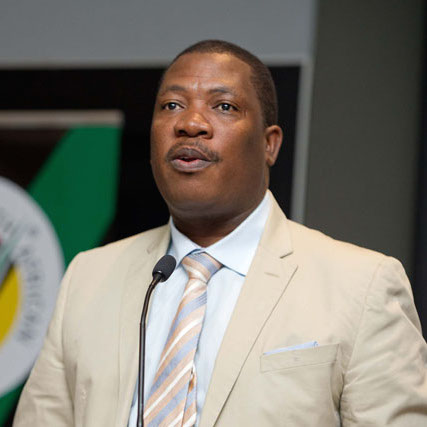Alan Stuart
I was the HOD Intermediate Phase at John Wesley School, connected to Pinetown Methodist Church near Durban. John Wesley Pinetown had been established out of the need for quality education for ALL children at the time of apartheid. We employed well-qualified teachers, were well-resourced and occupied a beautiful, leafy campus.
Bishop Purity Malinga of KwaZulu-Natal (KZN) Coastal Methodist Churches was a member of our Board of Governors. And through her contact with all KZN Methodist Churches; she had discovered another John Wesley School also connected to the Methodist Society in Kosi Bay. Kosi Bay aka Manguzi is on the far north coast of KZN just 15 km from the Mozambique border.
“Make contact with them and see how you can help each other,” Bishop Malinga begged us.
I pricked up my ears at the chance of visiting a rural school also named John Wesley and was excited at the prospect of experiencing something new. Our management decided we would make our first contact via sport. We contacted the principal at Kosi Bay and asked if we could bring a soccer team to play a match against them on a certain Saturday.
We left on that Friday and stayed over in Hluhluwe at the home of an ex-staff member. The following day we navigated the R22 past Mbazwana as we made our way to John Wesley Kosi Bay situated behind the Umhlabuyalingana municipal buildings.
The school campus consisted of two sets of prefabs and a brick toilet block which had been used by Space Construction when the tar road was built. These buildings were surrounded by loose sea sand which sported patches of hardy grass. I asked the principal, Mrs Gugu Tembe, to show me the facilities. The school had adapted construction prefabs to house the just over one hundred children enrolled. I asked Mrs Tembe what the school’s biggest problem was. She said that staffing was their major challenge. First of all, they were not able to match salaries offered by the state and secondly, teachers were not readily available in a far, rural area such as Kosi Bay. Most of the teachers they employed were not qualified. The germ of an idea sprang into my head.
We transported the teams and spectators to the ‘town field’. This was a relatively flat, semi-hard, sandy, patch with roughly hewn soccer posts at either end. On one side of the field, street vendors had shisanyama spots and braaied on an open fire, mielies, red chips in thin plastic packets and isqeda (iced cooldrink in small plastic bags).
On the other side of the field was an open-air mechanic’s workshop, an open-air tyre repairman and an open-air timber supplier and carpentry shed. Mr Muzi Mkhonto, a teacher from JW Kosi Bay refereed the soccer match. The Kosi spectators, mainly girls clad in their green uniforms and light brown hats, cheered both teams on equally – that was most impressive! Fanele Masinga, one of the girls said, “Sir, why have you only brought a soccer team? We also play netball you know!” I was taken aback by her forthright manner and excellent English, I promised her that we would bring a netball team the next time.
The match ended in a 9 all draw which was very apt, I thought. They then led us to the Manguzi Methodist Church where a wonderful lunch was laid on for us. We met Rev Olga Dlamini, of Ukhozi FM fame, who was the resident Methodist minister and also chair of their Board of Governors. The Kosi Bay and Pinetown soccer players, as well as respective staff members, were then able to socialise over a meal. The Pinetown group departed and slept over in Hluhluwe again that night. A visit to Hluhluwe-Umfolozi Game Reserve was taken on the Sunday en route home.
Later that year we organised a teacher exchange between the two schools. I and two other teachers from Pinetown drove up to Kosi Bay, and at the same time, three Kosi teachers drove to Pinetown to spend three days at the respective host schools. During my three days in Kosi, I taught almost non-stop. The resident teacher was away for some reason. I spent most of my time in the grade seven class, then some time in the combined grade five and six class. I enjoyed my interaction immensely, but remember being dismayed at the disparity of abilities within each class. There were learners who could converse confidently in English ranging to a learner who could hardly give his name. Maths abilities had a similar range.
Robert and Gladness Ntuli hosted us on their homestead in Manguzi. They had been one of a group of Methodist parents who had initiated the start of John Wesley Kosi Bay as an alternative to state schooling.
After this visit, I decided to apply for a job at John Wesley Kosi Bay. I took the bishop’s instruction fully to heart. I wrote a letter to Rev Olga Dlamini offering my services and awaited a reply. She phoned me on my cell as she wanted to hear me make the offer using my voice! We agreed that I would start the following year (2005) on a very basic salary and that the church would provide my accommodation.
During the next ten years, we moved campus, built proper classrooms, established a computer centre, developed the library, grew the school to include grade RR to matric (800 learners), became Sars and Umalusi compliant, registered as a PBO & NPO, laid out a sports field and joined the KZN and SA Christian Schools’ Sports Associations. We also became the best performing school in the area in matric results.
I cannot take the credit for all that I have stated above. Building a school is the work of a team – principal, management, staff, learners, parents and community. I can say though that I brought with me the knowledge of how a school is established and the enthusiasm to get the job done. All this started from John Wesley Pinetown twinning with John Wesley Kosi Bay. I believe that if we wish to improve the standard of education in South Africa, then those who have the experience must share this experience in the most practical way possible. Go and work in a school where you can really make a difference.
I have since moved away from Kosi Bay and am currently teaching the combined grade six and seven class at John Wesley School Eshowe.









